Perched atop a hill at the beach, Komasa Jyozo’s Kanosuke Distillery overlooks the East China Sea. Whisky and gin production has begun in Kagoshima, Japan’s southern lands, utilizing traditional techniques honed by producing the cask-aged shochu “Mellowed Kozuru.”
Header image: 5 stainless steel fermentation tanks. The layout takes after shochu traditions.
Images/text: Mamoru Tsuchiya
Translation: Whiskey Richard
This article originally appeared in Japanese in Whisky Galore Vol.13 / April 2019.
3 stills for plenty of variety in the distillate
In November 2017, Komasa Jyozo’s Kanosuke Distillery opened at Fukiage-Hama, in Hioki City, Kagoshima prefecture. Fukiage-Hama is one of Japan’s Three Great Sand Beaches, a white sand beach stretching 47km north to south, created by ancient pyroclastic flows. The sunsets are especially beautiful over the East China Sea, immediately adjacent to the distillery. In fact, the name “Hioki” is said to come from the Japanese words for sun (hi) and put down (oku).
Kanosuke is the distillery’s rare namesake, coming from the grandfather of current president Yoshitsugu Komasa: Kanosuke Komasa. The senior Komasa, second-generation head of the company, is accredited with establishing the methodology behind aging Mellowed Kozuru, a rice shochu, entirely in oak casks. Mellowed Kozuru is the product the company is known for today. “There simply isn’t a more appropriate name for this new distillery, which will be making whisky,” says Yoshitsugu Komasa, explaining the choice of name.
That distillery is situated right next to three warehouses built by Kanosuke-san, dedicated to aging Mellowed Kozuru. They were originally planned to house other facilities, but Kanosuke-san passed away during the process. His grandson Yoshitsugu-san has thus taken the reins of the company and launched the whisky business.
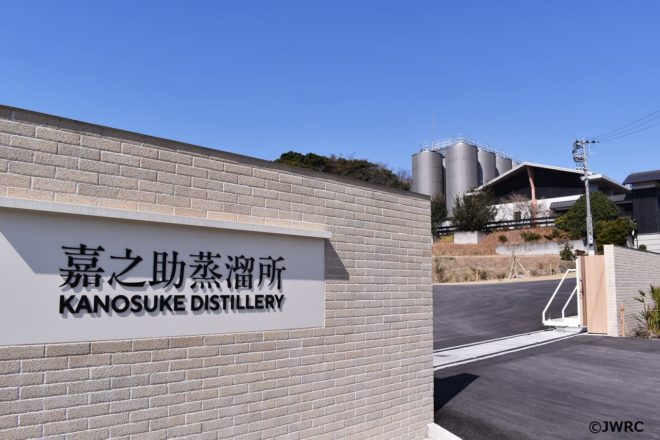
As of this writing, a batch of whisky at Kanosuke begins with one ton of malt. Komasa-san spent time observing at distilleries like Strathearn and Speyside’s Ballindalloch, but it was the latter that provided the most inspiration, he says. The square layout of the beautiful building made of wood and stone indeed closely resembles Ballindalloch. And Ballindalloch also uses one ton of malt for their mash. In Kanosuke’s case, though, all of the distillation equipment was ordered from Miyake Industries.
Kanosuke Distillery’s most apparent specialty is their three pot stills. At 6000L, 3000L, and 1600L, they each have slightly different shapes and angles in their lyne arms. The leftmost and rightmost stills are respectively only used as a wash still and spirit still, but the middle is multi-purpose, being used for both wash and spirit runs. It’s a revolutionary approach. And surprisingly, they all use worm tub condensers.
Apart from malt, fermentation time, and yeast, this ambitious distillery wants to create various distillates by changing up the distillation process itself.
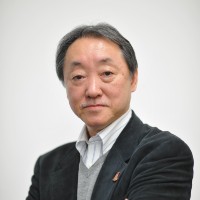
Mamoru Tsuchiya is Japan’s foremost whisky critic. He is the Representative Director of the Japan Whisky Research Centre, and was named one of the “World’s Best Five Whisky Writers” by Highland Distillers in 1998. He served as the whisky historian for NHK’s Massan and he has published several books such as The Complete Guide to Single Malt Whisky, Taketsuru’s Life and Whisky, and The Literacy of Whisky. He is the editor of the bimonthly Whisky Galore, Japan’s only print whisky magazine.

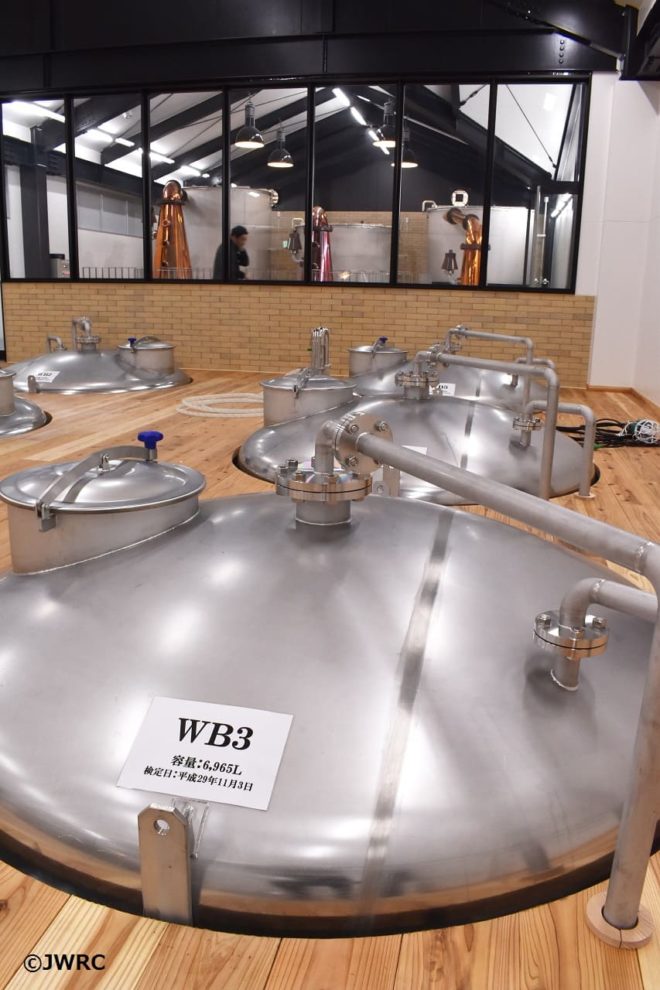
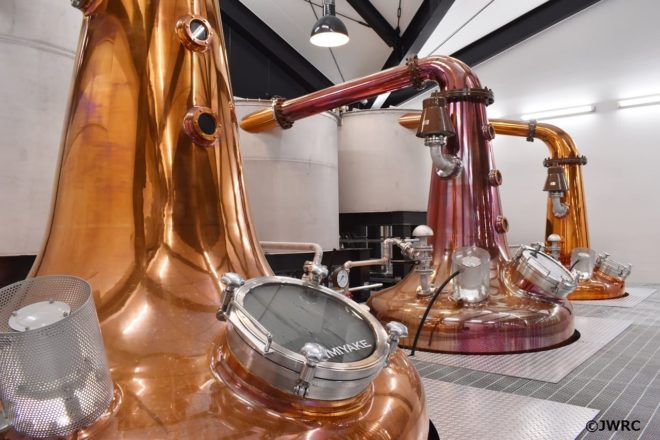
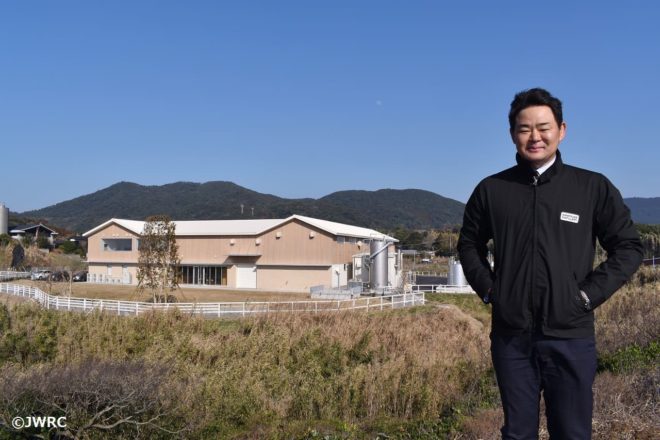
One Comment